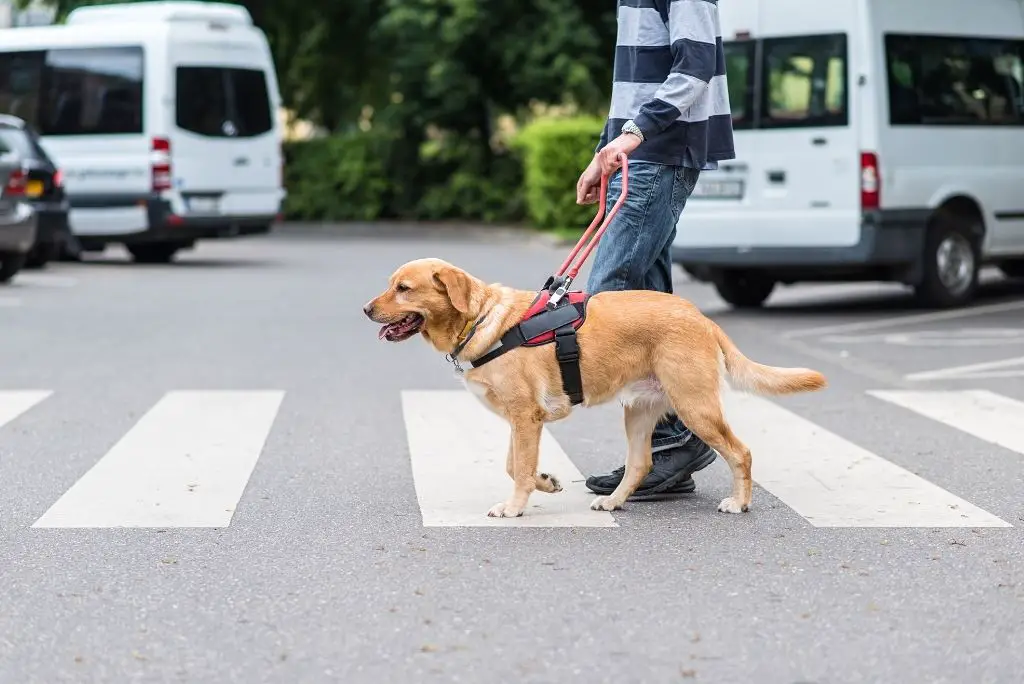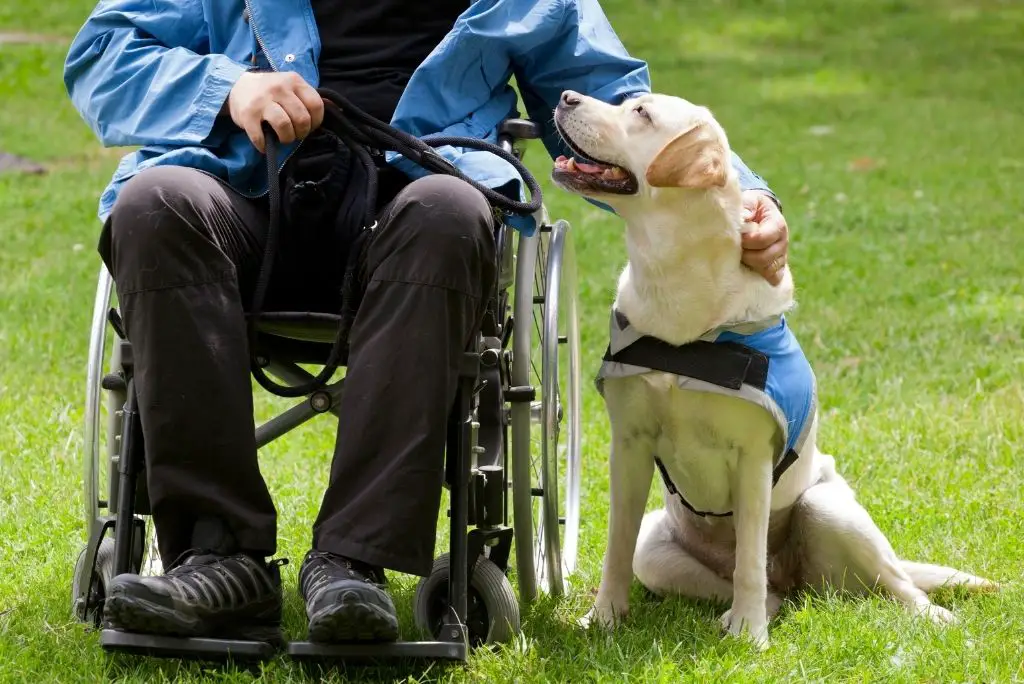Service dogs are trained to perform a task directly related to a person’s disability. Besides being their loving partners, service dogs play a vital role in the lives of their owners. They help them regain some form of independence that they wouldn’t have otherwise. There are several types of service dogs as there are different kinds of disabilities. These can be physical, psychiatric, sensory, or mental. In this post, we’ll look into 7 different types of service dogs.
Due to their important role, service dogs have full public access rights regulated by the Americans with Disabilities Act (ADA). This means that they’re able to go to places where other animals aren’t allowed. They’re also protected by the Fair Housing Act which applies different rules to applicants with a disability that own a service dog. Finally, the Air Carrier Access Act also applies different rules to people with disabilities that plan to fly with their service dog.
Article contents
1. Allergy detection dogs
Allergy detection dogs are trained to sniff out the odor of allergens and alert their owners. These allergens can be peanuts, gluten, or eggs, depending on what their owners are allergic to. This type of service dog is becoming more important as food allergies are on the rise. Some people can even go into anaphylactic shock by touching even a small amount of an allergen. These dogs can help prevent this dangerous situation by picking up the scent of the allergen before their owner can come close to it.
Allergy detection dogs are commonly paired with children as they’re more likely to have severe allergic reactions. This gives parents a bigger sense of comfort and security. These dogs can wear vests with pockets to carry medical information and medication.
2. Autism service dogs
Much like allergy detection dogs, autism service dogs are also commonly paired with children with autism. These dogs provide a sense of predictability which can help kids that have trouble connecting with others as they can act as an icebreaker. Dogs can improve a child’s quality of life by providing judgment-free love and companionship. This can reduce feelings of isolation and give comfort in stressful times. All of this can help children with autism keep their emotions under control and improve their communication skills so they can better navigate social settings.
A very important aspect of this type of service dog is that they’re trained to keep children with autism from running away and are also able to track them if they’re able to run off. Autism service dogs can also stop harmful behavior and alert parents to a potentially dangerous situation. In the case of a child or even an adult with communication issues, these service dogs should carry emergency protocols and contact information.
3. Diabetic alert dogs
Hyperglycemic and hypoglycemic events in diabetics have associated scent changes that are imperceptible to humans, but not to dogs. Diabetic alert dogs pick up on chemical changes in blood sugar levels and alert their owners for any highs and lows before they become dangerous. That way, a diabetic person will know to test their blood so they can inject insulin or ingest a dose of glucose. This provides a sense of independence and security.
This type of service dog is also trained to alert others or set off an alarm if their owner needs medical help. They also carry emergency protocols in their vests, specific to their owner, so that first responders know how to proceed with medical treatment.

4. Guide dogs
This is probably the most commonly known type of service dog. Guide dogs are owned by blind and vision-impaired people that need help navigating the world. The ADA doesn’t require these dogs to wear a vest but they’ll usually wear a special harness with a handle on it. The interesting thing about these dogs’ training is that they practice what’s called “selective disobedience”. This means that, although they obey commands, they’ll still make choices based on their own assessment. This is what prevents them from crossing the street if there are cars coming, even though their owner is telling them to.
5. Hearing dogs
Much like guide dogs, hearing dogs are owned by people with hearing impairments. This type of service dog is trained to alert its owners to noises such as fire alarms, doorbells, phones, alarm clocks, and even the person’s name. Whenever hearing dogs detect the sound they need to respond to, they’ll touch their owners and lead them towards the noise. They can also practice selective disobedience. Hearing dogs aren’t required to wear any special gear but some owners choose to have them wear a bright orange vest.
6. Mobility assistance dogs
This type of service dog helps people with a wide range of mobility issues perform everyday tasks, increasing their independence and confidence. They can bring objects to people, press buttons on automatic doors, serve as a brace for people, or even help pull a wheelchair up a ramp. Mobility assistance dogs that are trained to brace their owners often wear specially-fitted harnesses and need to be of a large breed to provide enough support.

7. Psychiatric service dogs
Psychiatric service dogs help people suffering from issues such as depression, anxiety, and post-traumatic stress disorder (PTSD). These people tend to feel hyper-vigilant about their safety and this type of service dog helps make them feel safer by doing things like entering a house or room before their owner and turning on the lights. It’s important to note that there’s a difference between psychiatric service dogs and emotional support dogs or therapy dogs. This type of service dog goes through extensive training and performs specific tasks related to their owners’ disability which makes them service dogs according to the ADA.
Making sense of it all
A dog is a man’s best friend but a service dog is even more than that. To people with crippling disabilities, they can mean the difference between being able to carry on with their lives with independence and confidence or always having to rely on someone else. Because there are many different disabilities, there are also many different types of service dogs. Each of them will perform specific tasks for their owners but all of them provide a loving partnership and help their owners achieve a better quality of life.
Some also mention the existence of seizure alert and seizure response dogs. However, because it has not yet been proven that it’s possible to train dogs to do these tasks, they haven’t been included in this article. Therapy dogs and emotional support dogs aren’t considered service dogs as they’re not trained to perform a specific task for their owners in order to help them live with their disability. In most states, these types of working dogs don’t have the same privileges as service dogs such as having full public access rights or special conditions when it comes to transportation.
